I don’t consider these perks that I am going to tell you very unique because other countries have similar situations. However, I am still going to tell you something about Vietnam culture:
There are 3 different approaches of how Vietnamese culture is perceived, such as:
Vietnam culture is Kinh ethnic people’s culture . Kinh people are the majority ethnic group of Vietnam, comprising ~85.7% of the population (2017) [source] .
Vietnam culture is the culture of every ethnic people that live in Vietnam territory ( 54 ethnic groups ). There’s no national culture, only ethnic culture.
Vietnam culture is the culture of the community of all ethnic people living in Vietnam territory . This bond and interaction between all these ethinic cultures give birth to a common national culture.
What I am demonstrating below is the 1st approach, since the Kinh’s culture is so dominant and sometimes aggresive that its present can be seen everywhere in Vietnam, even minor ethnic groups intergrate some part of the culture into their daily lives. The 3rd approach sounds very good on paper but after read through some study about this it feel too much of a political move than actual culture study, since it seems impossible to find a common ground between all 54 ethnic groups’ culture beside living in the same country. In my belief although there is interaction between cultures, there’s no such thing as a smooth mixture of cultures. Each culture itself need to be very distinctive otherwise they would fade away quickly.
So, Vietnam culture was heavily influenced by Chinese culture in terms of politics, government, Confucian social and moral ethics, and art. Vietnam is considered to be part of the Sinosphere aka. East Asian cultural sphere.
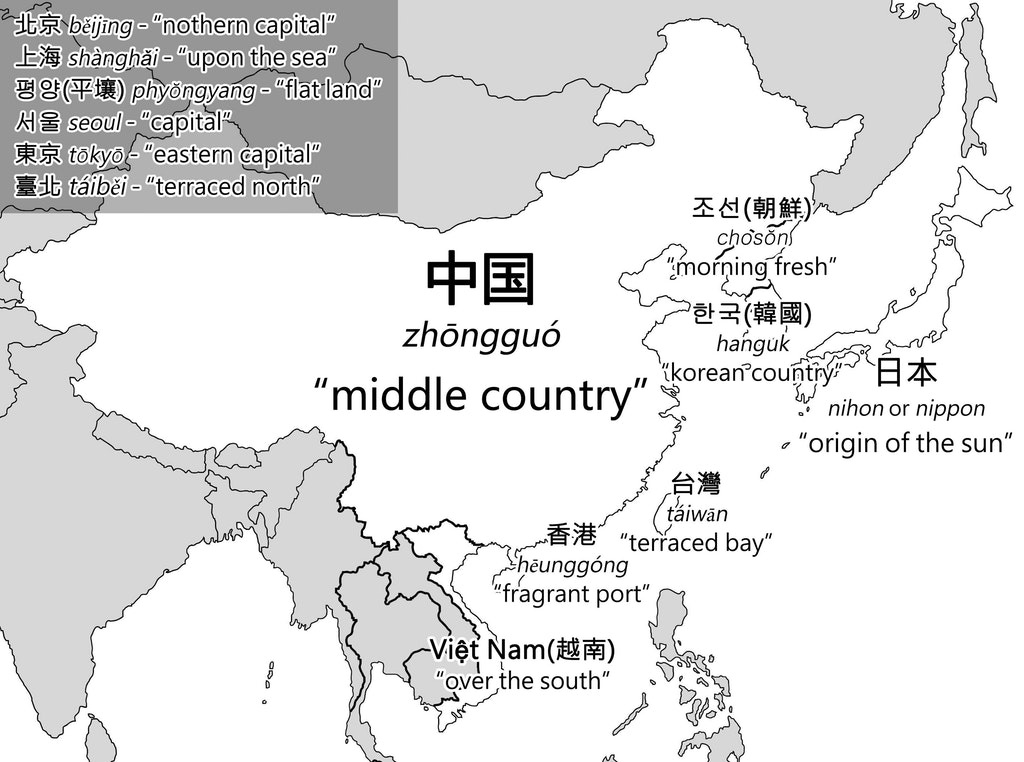
During the course of history, Vietnam have multiple expansion toward the south that resulted to the annexation of territories formerly belonging to the Champa civilization (Central Vietnam) and parts of the Khmer empire (Southern Vietnam). This created some regional variances in Vietnam culture due to exposure to these cultures.
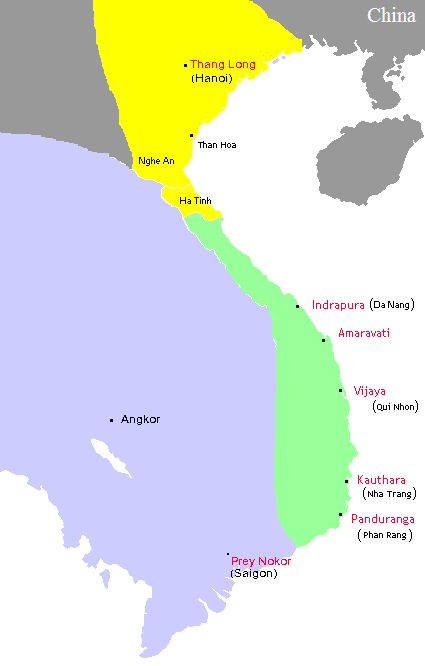
The territory of Champa circa 1000–1100, depicted in green, lay along the coast of present-day southern Vietnam. To the north (in yellow) lay Đại Việt; to the west (in blue), Angkor. [ Source ]
Then came the French colonial period . During this era Vietnam culture took in influence from Europeans, with some importance notes such as the adoption of the Latin alphabet or the spread of Catholicism.
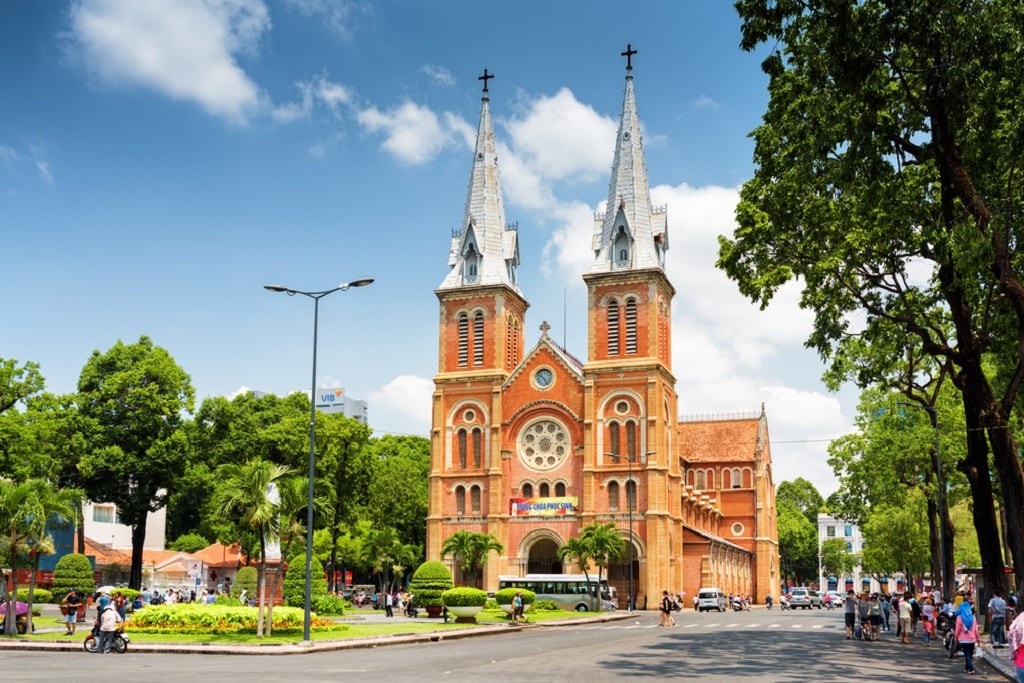
Those above are the important marks of the changes that shaped the current Vietnam culture today. So, the characteristic of Vietnam culture can be observed as follow:
Kinship
Vietnam culture emphasis on the roles of family and clanship. Each clan has a patriarch, clan altar, and death commemorations attended by the whole clan. Blood related kins have tendency to come live together. This can be observed in village names such as Đặng Xá (place of the Đặng clan), Châu Xá, Lê Xá, etc. In most areas in Vietnam, you can still easily see three or four generations living under one roof.
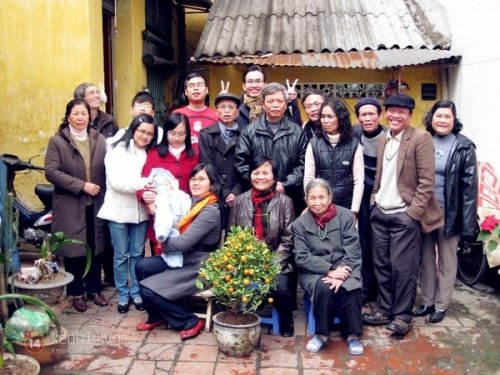
Marriage
The traditional Vietnamese wedding is one of the most important tradition in Vietnamese occasions. Nowadays, the wedding is influenced by Western culture. However, many of the old customs practiced in a traditional Vietnamese wedding continue to be celebrated.
The marriage were generally arranged by the parents and extended family, with the children having limited influence in the decision. Although nowadays, people can freely decide how to proceed their own marriage, there still is some part of it where the family arrangement have influences in. You can check my other answer regarding this matter:
Nam Phương Bùi's answer to When did the Vietnamese people stopped getting an arranged marriage?
The marriage have 2 main ceremonies:
Đám Hỏi (betrothal (engagement's ceremony) : Some time before the wedding ceremony, the groom and his family visit the bride and her family with round lacquered boxes known as betrothal presents. The quantity of boxes must be an odd number. The presents can be various delicacies such as areca nuts, betel leaves, tea, cake, fruits, wine and money. The presents are covered with red paper or cloth, and they are carried by unmarried girls or boys. Both families agree to pick a good date for the wedding.
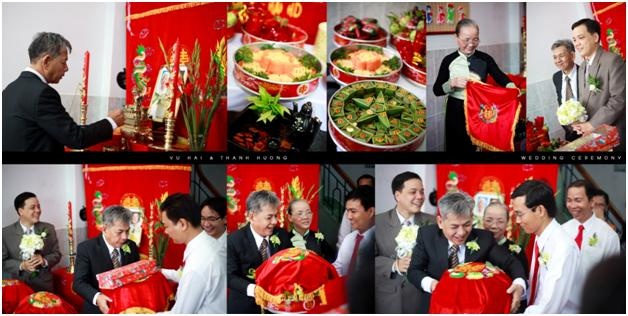
Đám Cưới (wedding ceremony) : On the wedding day, the groom's family and relatives go to the bride's house to ask permission for the groom to marry and take his bride to his house. Guests would be invited to come and celebrate the couple's marriage. The couple pray before the altar asking their ancestors for permission for their marriage, then to express their gratitude to both groom's and bride's parents for raising and protecting them.
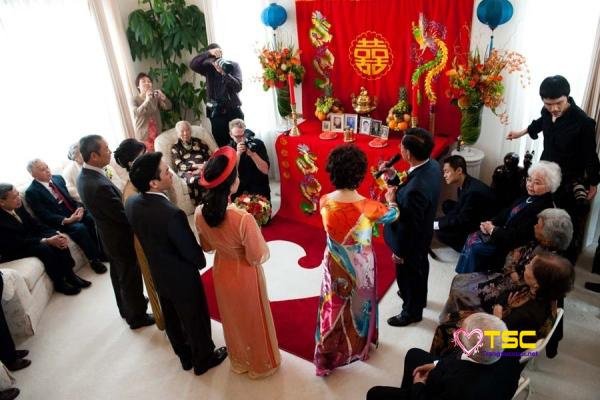
Nowadays, to save the trouble, many family celebrate both “Đám hỏi” and the first part of “Đám cưới” where the groom's family go to the bride's house at the same time. However, the arrangement is still there just not an official ceremony but 2 families sit together and discuss it. Also there is a following part of “Đám cưới” and usually that is celebrated in (usually) a restaurant so that more people can attend. Usually there are 100+ people friends of both families will attend this part of the ceremony. The first 2 ceremonies usually only family, relatives and very close friends, which is a few dozen at best.
Funeral ceremony
When a person passes away, the body is washed and dressed. A chopstick, is laid between the teeth and a pinch of rice and three coins are placed in the mouth.
The time and date when the person passed away will be given to a shaman or a person who study I Ching to see if it’s fortune or bad omen. This person will also list a variety of bad horoscopes to avoid the funeral (which mean family people with these horoscope should not attend certain ceremonies) and the time to hold the upcoming ceremonies. Also if there is some bad omen some other extra ceremonies will need to be followed to avoid bad luck to the family.
The dead body is enveloped with white cloth, “Lễ khâm liệm” and placed in a coffin, “Lễ nhập quan”.
Then the direct related family members will wear white clothes and head cloth, “Lễ thành phục”
After that is a period of days (usually 3 days but mayber shorter or longer depended on the circumstances) for friends and acquaintances to come to pay respect to the dead and give condolescenes to the family. They also will give the family some money as an extra help for the funeral.
During this period, some families also invite some funeral music band to come and play for the guest.
Then the coffin is moved (“Di quan”) to the burial cemetry or crematorium if they family decided a cremation. In case of cremation the ashes will be collected in a jar and delivered to a pagoda.
Family will held a worship ceremony at home every 7 days, for 7 weeks, then there is a “Tuần chung thất” ceremony (stop weekly worship) and after 100 days is “lễ tốt khốc” (thôi khóc - stop crying). After 1 year, is “Giỗ đầu”(First year of worship) and 3 years is “Mãn tang” (no longer mourning).
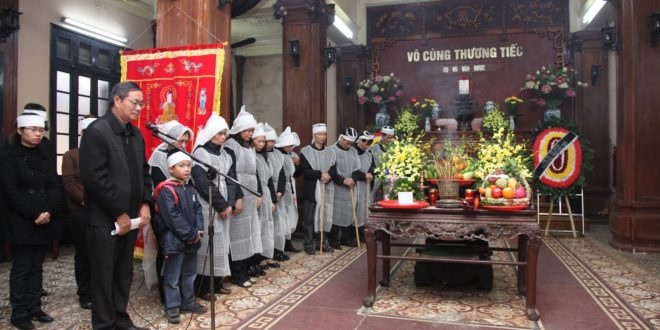
Ancestor worship
Ancestor worship is common in Vietnam. Most Vietnamese practice ancestor worship and have an ancestor altar at their home, a testament to the emphasis Vietnamese culture places on filial piety.
Conclusion
Although there are many more culture aspects, those I show aboved are some that I believed what shape most Vietnamese Vietnamese. People can love different type of habits, arts, food, fashion, etc. but every Vietnamese will have to go through these same practices in the course of their life. And that’s what matter.

